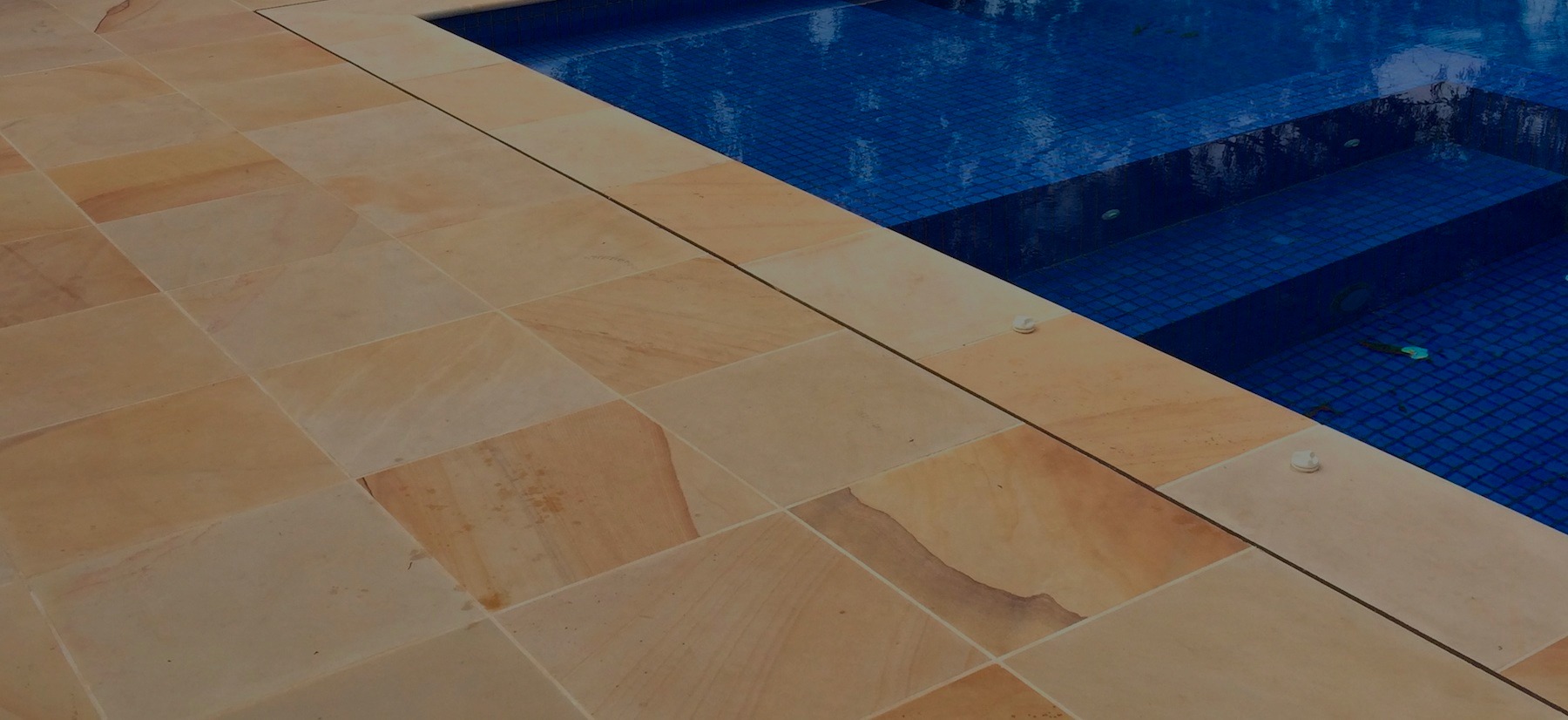
Choosing The Perfect Sandstone Pool Coping: 5 Tips and More!
Sandstone tiles and pavers are one of Australia’s most popular natural stones. They are available in a variety of hues and textures. While some homeowners enjoy the look of tan and brown Sandstone tiles, others favour the material’s more natural appearance of light blue and grey Sandstone pavers.
Any outdoor space benefits from this rustic appeal of the lovely, traditional natural stone. Because it is durable, sturdy and weather-resistant, this natural stone is perfect for a pool. It is frequently used for patios, courtyards, pool surrounds and pool coping and is great for traditional and modern pool designs.
Here, let’s dive deep into Sandstone tiles used as pool copings. Read on.
When selecting your pool coping, keep the following in mind:
#1 Tip
Salt-testing your pool tiles and pavers is important. Selecting a material type that works for your pool coping is crucial. Not all natural stone pavers are made equally; some are more well-known than others. A harsh mineral or acid is almost always present in swimming pools and when these substances come into touch with natural stone, your stone tiles may crumble either quickly or gradually.
We subject the raw natural stone material to extensive testing to determine whether the tiles are sturdy enough to be utilised close to these contaminants. To determine how long the stone will last, we look at key factors, such as how the stone reacts to salts, chlorine and other elements. We believe that Sandstone tiles are a good choice for the same. However, it would need to be sealed for better use.
#2 Tip
Check to see if the pool’s pavers are slippery. Because the pool coping area is constantly stressed by water, slip resistance is almost as important. A P4 to P5 non-slip grade is what we seek.
Remember that when installing a pool, safety is the most important factor you will ever need to consider. It is not advised to use regular tumbling pavers around the pool since they get a little slick when wet. It is employed widely. When wet, we can manage our equilibrium and avoid falling, but young children cannot. So, the best choice is Sandstone tiles or pavers for pool coping.
#3 Tip
Selecting a pool coping profile that fits your pool’s design and is secure. Naturally, you want your pool to appear beautiful. To turn your pool into a true work of art, select the coping profile that will go well with your pool, the area’s features, your home’s design and your personal preferences.
For your pool coping, you may generally choose from 3 edges.
- a) Drop Edge Pool Coping
Drop edge pool coping made of Sandstone tiles provides a solid border for your pool. You may either have a drop edge pool coping made to order for you or buy it in one solid stone piece (without a junction) if you want a more contemporary look. Drop edges have been shown to extend up to 130mm into the water. Your tastes will determine this. With drop-edge coping, the inner water appears surrounded by a stone slab, drawing attention to your pool.
- b) Pencil Round Pool Coping
Pencil-shaped pool coping made of Sandstone tiles features top and bottom edges rounded by 3 to 5 mm for a smooth finish. When utilising sawn pavers, this is essential since their edges could be too sharp to use close to the pool coping.
For a modern pool, pencil round can be a chic, subtle finish that complements more rectangular or L-shaped pools.
- c) Bullnose Pool Coping
A finish that works well with pools that are curved or kidney-shaped. Bullnose coping made of Sandstone tiles has a thick, semi-circular finish. This coping gives the Character style home a more classic look, which suits it. It improves the warmth of your pool and is excellent for safety.
#4 Tip
If your pool is exposed to the sun all day, darker-coloured Sandstone tiles will become warm, making barefoot walking practically impossible. For instance, grey Sandstone tiles are ideal for saltwater pools because they can withstand salt, but because they are constructed of sturdy volcanic stone and are black, they take a long time to cool down. Pick a natural stone from the calcite family if this pertains to you. Pool Coping made of Sandstone tiles is also good for this because of their capacity to reflect heat. It is less of a concern if you don’t get a lot of sunlight.
#5 Tip
Since sealing the stone will give you 24 to 48 hours to clean it, maintenance is crucial. We advise removing anything acidic from your Sandstone tiles as soon as possible (which is usually simple if you are outside and spillages occur). When you are indoors, when the tree leaves fall or when the pets use the loo, these offences are usually the worst. They may leave nasty stains that are hard to remove if you can’t quickly reach the stone. The sealer is useful in this situation since it allows you more time to care for the stones.
How can you use Sandstone tiles and pavers for pool coping?
Sandstone tiles ad pavers—typically light brown or red—might be the most resilient among the stone pool coping possibilities. Pools with vivid and striking colours pair well with Sandstone tiles in terms of colour.
You must seal the pavers and tiles before using Sandstone for pool copings. It is a result of how porous Sandstone is. It is substantially weakened by both acid and salt. Because the pool is continually exposed to harsh chemicals and minerals, sandstone pool copings must be sealed before use.
Natural stone is no longer considered more expensive than concrete and clay products. Australia’s hot summers and harsh winters benefit from the dependability and durability of natural stone known as Sandstone. Stone Depot is one of the best sources of Australian Sandstone tiles, which are great for outdoor pavement or swimming pools. Sandstone tiles and pavers’ anti-slip and salt-tolerant qualities are quite advantageous for swimming pools. They provide elegance to swimming pools because of their natural resemblance to sand. Contact them today for free samples!



